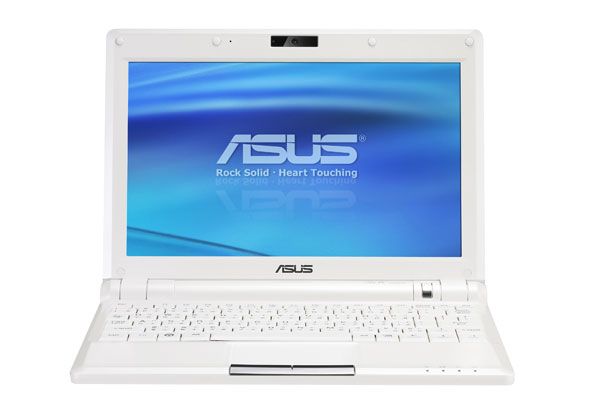Screen quality is adequate, but not outstanding. - using the built in screen diagnostic you can see that colours are fairly muted and that the screen has a slight mottled effect. Then again, this isn't a product intended for photography work and if you just want to view presentations and slides, it's adequate.
It's not the brightest screen in the world either and this could be an issue if you need to use it outside. In my tests in mild sunshine I was barely able to see the screen.
Vertical scrolling is made a lot easier on this new model thanks to the next biggest addition - a multi-touch trackpad. Apple made much of this when it took the technology from the iPhone and brought it into its MacBook Air - expanding the size of its trackpad in the process. The track pad on the 900 is not large, but the multi touch worked smoothly and flawlessly and felt quite natural. In web pages, you simply place two fingers together to scroll quickly up and down, which is easier than using the arrow keys or aiming for the scroll bar.
This works in all scrolling applications, so you can also use it say, to flick through slideshows. You can also use it to zoom, moving two fingers apart to zoom in, and together to zoom out - however this only works in StarSuite 8 and Adobe Reader and on Works on the Windows XP version. The trackpad doesn't do the Air's funky rotate trick, but you can't have everything.
The keyboard itself is a possible cause of concern. One of the downsides of mini notebooks like this is that they are by nature quite cramped and after typing on it for a long while you'll begin to notice this. I don't have the fattest fingers in the world by a long chalk, but even I felt a little squashed in. The biggest problem was the position of the Shift key. I normally strike this with the little finger on my right hand, but found that this was exactly where the Up arrow key lay, which meant I regularly, kept sending the cursor key shooting off on adventures of its own. Other than that, I was able to get a decent typing speed, and there was a satisfactory amount of travel and solidity to the keypad.
Wi-Fi is built-in and I was quickly and easily online at the Dennis offices. Not surprisingly it's not draft-N, as this still would carry a premium over regular b/g connectors. Nor is the Ethernet port Gigabit - it's only 100 Mb/sec. However, it's still a positive that it's there, unlike other high profile and much more expensive laptops - yes, I'm referring to you MacBook Air.
On the same note, the Eee PC also manages to pack in three USB ports. You also get a VGA output and an SD card slot, which means a quick and affordable way to add to the storage.
The internal disk on the Linux version is a 20GB SSD. This is split into a 4GB partition, which was what the original Eee PC offered, and clearly Asus has just shoehorned in a 16GB SSD in to take it up to 20GB.
The Windows XP version however will only ship with a 12GB SSD drive, presumably to balance costs, as both versions are the same price at 329. In terms of storage though, it's the wrong way round as XP will take up more space the Linux install.
Benny Har-Even is a twenty-year stalwart of technology journalism who is passionate about all areas of the industry, but telecoms and mobile and home entertainment are among his chief interests. He has written for many of the leading tech publications in the UK, such as PC Pro and Wired, and previously held the position of technology editor at ITPro before regularly contributing as a freelancer.
Known affectionately as a ‘geek’ to his friends, his passion has seen him land opportunities to speak about technology on BBC television broadcasts, as well as a number of speaking engagements at industry events.














